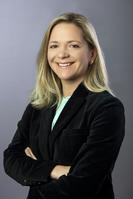Design of First Experiment to Achieve Fusion Target Gain > 1
| Event Date: | January 31, 2024 |
|---|---|
| Speaker: | Dr. Andrea "Annie" L. Kritcher |
| Speaker Affiliation: | Team lead, Group leader in Design Physics Division, and Designer of the first ever fusion ignition experiment,
Lawrence Livermore National Laboratory |
| Type: | Virtual |
| Time: | 3:30 pm |
| Location: | Virtual |
| Priority: | No |
| School or Program: | Nuclear Engineering |
| College Calendar: | Hide |
Abstract:
The inertial fusion community have been working towards ignition for decades, since the idea of inertial confinement fusion (ICF) was first proposed by Nuckolls, et al., in 1972. On August 8, 2021 and Dec 5th 2022, the Lawson criterion for ignition was met and more fusion energy was created than laser energy incident on the target at the National Ignition Facility (NIF) in Northern California. The first experiment produced a fusion yield of 1.35 MJ from 1.9 MJ of laser energy and appears to have crossed the tipping-point of thermodynamic instability according to several ignition metrics. Building on this result, improvements were made to increase the fusion energy output to ~4MJ from 2.05 MJ of laser energy on target, resulting in target gain exceeding unity for the first time in the laboratory. This result is important in that it proves that there is nothing fundamentally limiting controlled fusion energy gain in the laboratory. The presentation will detail the physics design that enabled these results.
Bio:
Dr. Annie Kritcher is the integrated modeling team lead within the inertial confinement fusion (ICF) program and the lead designer on Hybrid-E experiments, which recently achieved >3 MJ fusion yield and first ever fusion target gain in a laboratory. Annie is also a group leader within the design physics division line organization.
She earned her M.S. and Ph.D. in nuclear engineering from the University of California, Berkeley, and her B.S. from the Nuclear Engineering and Radiological Sciences department at the University of Michigan. Dr. Kritcher was first employed at the Lab as a summer intern in 2004, then as an LLNL Lawrence Scholar from 2005-2009 during her thesis at UC Berkeley, as a Lawrence postdoctoral fellow in 2009 following completion of her Ph.D, then as a member of technical staff in 2012. Annie started out at LLNL in experimental physics measuring the plasma conditions of high energy density matter and studying nuclear plasma interactions. She then transitioned to design staff during her career appointment, where she designed the first fusion ignition and target gain experiment ever achieved in a laboratory. She won the John Dawson award for her work in creating a burning plasma 2022.
Annie is a fellow of the APS and was named one of Time magazine’s 100 most influential people in the world in 2023.
2024-01-31 15:30:00 2024-01-31 16:30:00 America/Indiana/Indianapolis 1 Virtual

